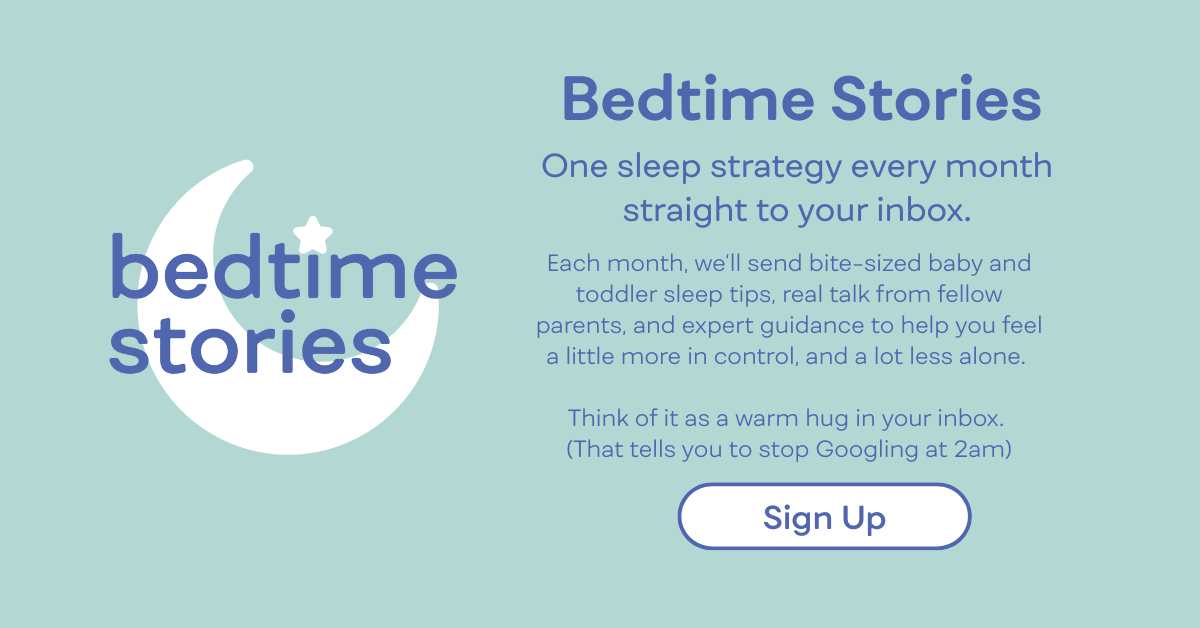How To Choose A Nap Routine For Your Baby
Struggling with unpredictable baby naps? Transitioning from wake windows to a clock-based nap routine can bring structure to your day and better sleep for your baby. In this article, you'll learn when to make the switch and which nap routine suits your baby best.
Why use a nap routine for your baby?
Many babies and families thrive when they move to a nap routine. Having set nap times not only gives parents structure and predictability to their day, which in turn can lower feelings of anxiety. Having set day naps based on time also helps establish nap times for your baby's body clock and this can make the falling to sleep process easier.
There are a few things to consider when deciding what nap routine will best suit your baby and family dynamic.
When is the best time to move from awake windows to a nap routine?
Before six months old, you can use set nap times as a goal while also being guided by your baby's tired signs and adjusting their nap times in accordance. After 6 months of age, if you have overcome cat napping you can transition a baby to a nap routine set by clock times. This means, regardless of how long their nap was, put them down for their next nap at the scheduled time according to their nap routine.
If your baby is still cat napping, you want to work on lengthening the naps and I can help with my Top Tips for Cat Napping.
If your baby is much older, and you have not transitioned them to a nap routine yet, don't sweat it. You can start using a clock-time routine when it best suits you and your family.
]
What is the best nap routine for my baby?
How you distribute naps across the day can have a big impact on bedtime and night wakings. You want to give your baby age-appropriate opportunities to relieve sleep pressure during the day. This will help ensure they are not going to bed with too little or too much sleep pressure.
Before deciding which baby nap routine you want to use, keep a sleep diary and get an idea of how much total day sleep your baby is having and then decide how you want to distribute that across the day.
Option 1: The Short/Long
With this routine, your baby goes down for their morning nap, and if they do not wake naturally after 30-45 minutes, you gently wake them from their nap. At 6 months, many babies can sleep for 45 minutes for this nap and still have a long, restorative afternoon nap. But babies who are closer one may need to be woken after 30 minutes.
For the long afternoon nap, babies on this routine have anywhere from 1.5 - 2.5 hours of sleep. If they wake early from this nap, you need to re-settle to encourage them to go back to sleep.
Sample short/long nap routine:
9:30 AM (30-45 min) | 1:00 PM (1.5-2.5 hrs) | 7:00 PM bedtime
The pros of this routine:
It encourages the bulk of the sleep to occur in the afternoon, which is protective of night sleep. Also,
Parents only need to spend time resettling one nap of the day.
The short nap is a great nap to have on the go in the car, pram or carrier.
The cons of this nap routine:
It can often take upwards of two weeks for the long afternoon nap to consolidate
Parents do not like capping their baby's naps.
Option 2: The Medium/Medium
In this nap routine, the baby has two naps of more equal length - anywhere from 1 - 1.5 hours. If your baby wakes early (under an hour) from either nap, you need to resettle and encourage to encourage them to extend that nap.
Sample medium/medium nap routine:
9:30 AM (1-1.5 hrs) | 2:00 PM (1-1.5 hrs) | 7:30 PM bedtime
The pros of this nap routine:
many babies can naturally sleep longer for their first nap since they still have leftover melatonin in their system from their nighttime sleep.
It does not require parents to cap any naps.
It can promote a later bedtime, which suits some families.
The cons for this nap routine:
Some parents feel more trapped at home with two longer naps in the day
It can promote a later bedtime, which does not suit some families.
Many babies on this routine can inadvertently slip into a long/short routine.
Option 3: The Long/Short
In the long/short nap routine, a baby has a long morning nap of 1.5+ hours. This long morning nap drops their sleep pressure significantly and the afternoon nap is then a shorter nap of 30-45 minutes.
Sample long/short routine:
9:00 AM (1.5+ hrs) | 2:30 PM (30-45 min) | 7:00 PM bedtime
We do not typically suggest this routine to clients as it can create a scenario where the baby gets to bedtime with too much sleep pressure, and this can create fragmented night sleep.
If your baby is naturally sleeping on this routine and there are no issues with night wakes, then there is no need to change anything. But if your baby is on this nap routine and you are experiencing frequent night wakes, you may consider changing to a different nap routine.
What happens when my baby's naps are off schedule?
Once your baby is well-established on a nap routine, you do not need to worry that a day off will ruin your nap schedule. Follow the 80/20 rule. Aim to maintain your baby's nap routine 80% of the time, and then reserve the other 20% for when life happens.
If all day naps are short, use an earlier bedtime to compensate. Do not worry, this will not make them wake any earlier the next day.
And if you go on holiday, or illness strikes, there is a good chance the balance will be thrown off and naps might look messy for a while. But once you are back home, or baby is well again, you can get them back on to the routine without much fuss.
Remember, every baby is different - choose the routine that feels right for your family and try it for a full two weeks before assessing its impact on your baby's sleep.

